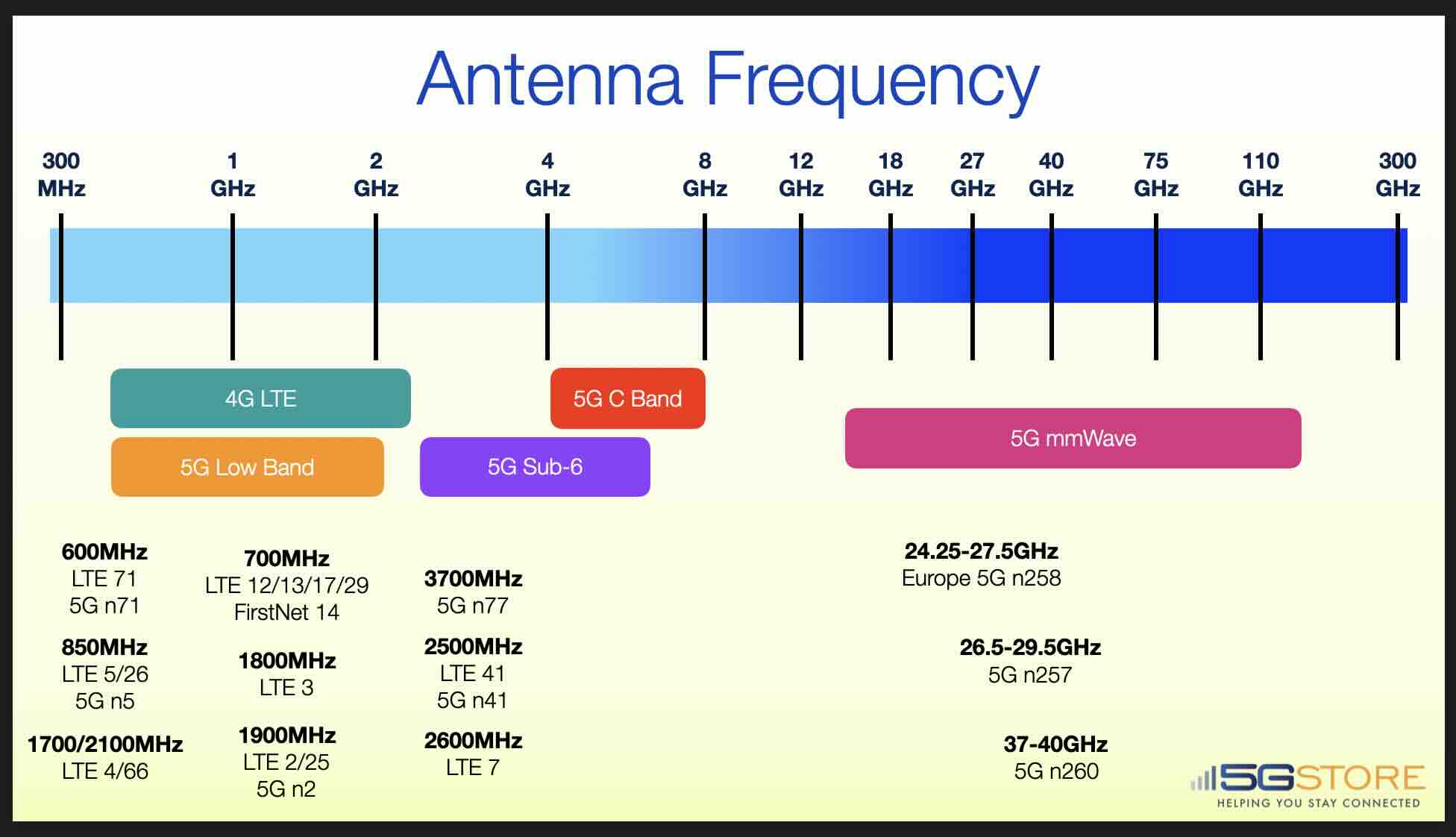


Antennas play a critical role in the transmission and reception of cellular signals. They are designed to emit or receive electromagnetic waves, which carry information such as voice, data, and video, over the air. In the case of cellular networks, antennas are used to communicate between the mobile devices and the base stations. When you make a call or send a message on your smartphone, your device sends the signal to the nearest base station via an antenna, which then relays the signal to its destination.
But what about antenna frequencies? How do they impact cellular communication?
LTE (Long-Term Evolution) and 5G (5th Generation) cellular frequencies are used for wireless communication over cellular networks. LTE and 5G use various frequency bands depending on the region and the cellular operator. Generally speaking, LTE uses lower frequencies than 5G. Some are similar however, but are expanded to include additional frequency ranges (e.g. LTE Band 71 and 5G Band 71). It's important to note that frequency bands used by LTE and 5G vary between countries and network operators.
The use of different frequency bands can impact the speed, coverage, and penetration of wireless signals. Higher frequency bands can provide faster data speeds and lower latency, but they may have lower coverage and penetration compared to lower frequency bands. This is why it's important to choose the right antenna frequency for your specific use case. Whether you're building a cellular network, designing a wireless device, or simply trying to improve the signal quality on your smartphone or modem, understanding antenna frequencies is essential.
At 5Gstore.com, we specialize in providing high-quality antennas for cellular networks, WiFi, and GPS. Our antennas are designed to meet the specific needs of your project, whether you're looking for a low-cost solution for a small deployment or a high-performance antenna for a large-scale network.
LTE Band 4 is also known as the Advanced Wireless Services (AWS) band, and it operates on a frequency range of 1710-1755 MHz for the uplink and 2110-2155 MHz for the downlink.
In North America, LTE Band 4 is commonly used by carriers such as AT&T, T-Mobile, and Verizon for their 4G LTE networks. It is also used in other regions, such as in parts of Latin America, the Caribbean, and Asia.
LTE Band 4 offers several benefits, including improved network capacity and faster data transfer speeds. However, its shorter wavelength means it may have slightly reduced coverage compared to lower frequency bands, especially in densely populated urban areas where signal penetration may be hindered by buildings and other structures.
LTE Band 66 is also known as AWS-3 (Advanced Wireless Services 3) and operates on a frequency range of 1710-1780 MHz for the uplink and 2110-2200 MHz for the downlink.
LTE Band 66 was introduced as part of the 600 MHz auction in the United States in 2017, and it is primarily used by T-Mobile in North America. However, it is also used in other parts of the world, including in some regions of Canada and Europe.
One of the advantages of LTE Band 66 is its ability to support carrier aggregation, which allows multiple frequency bands to be combined to increase data transfer speeds and improve network capacity.